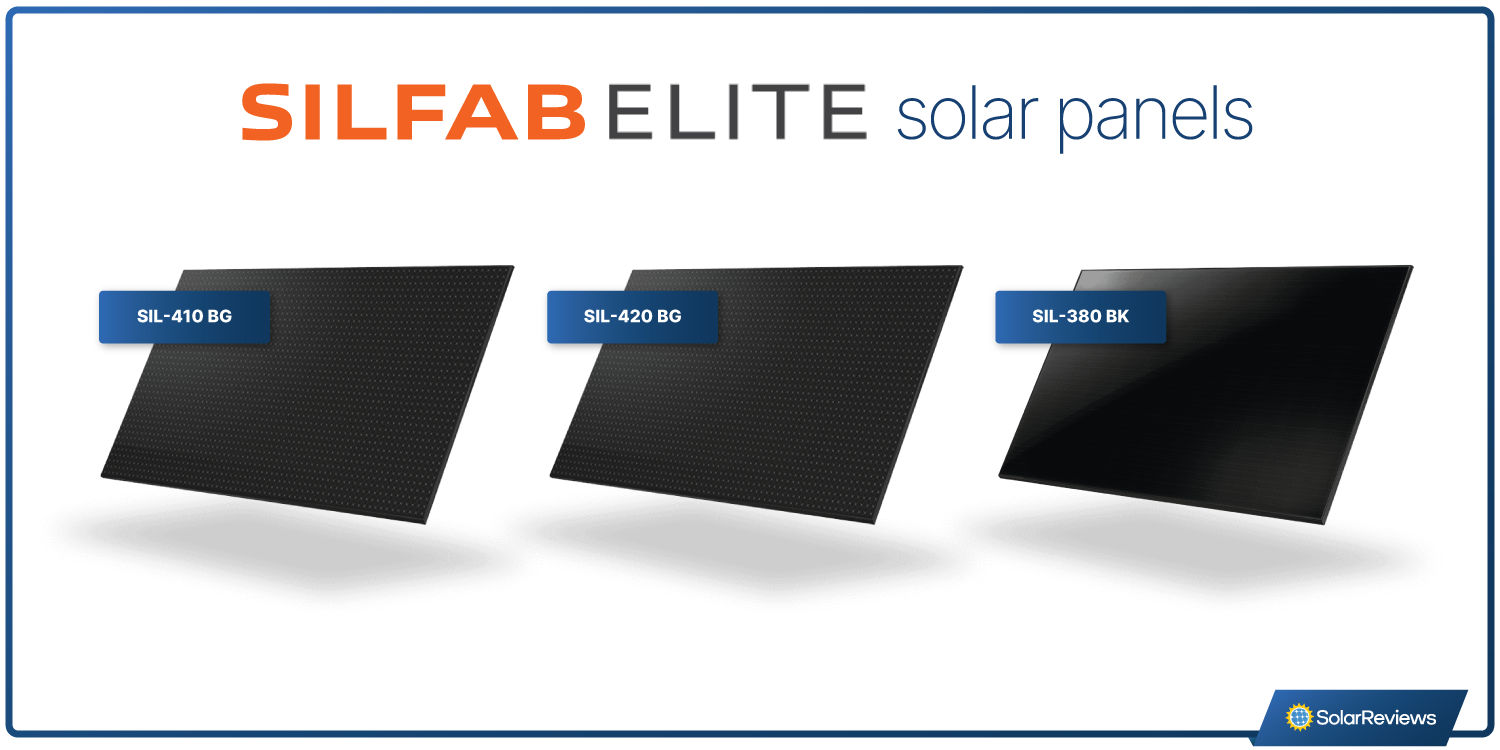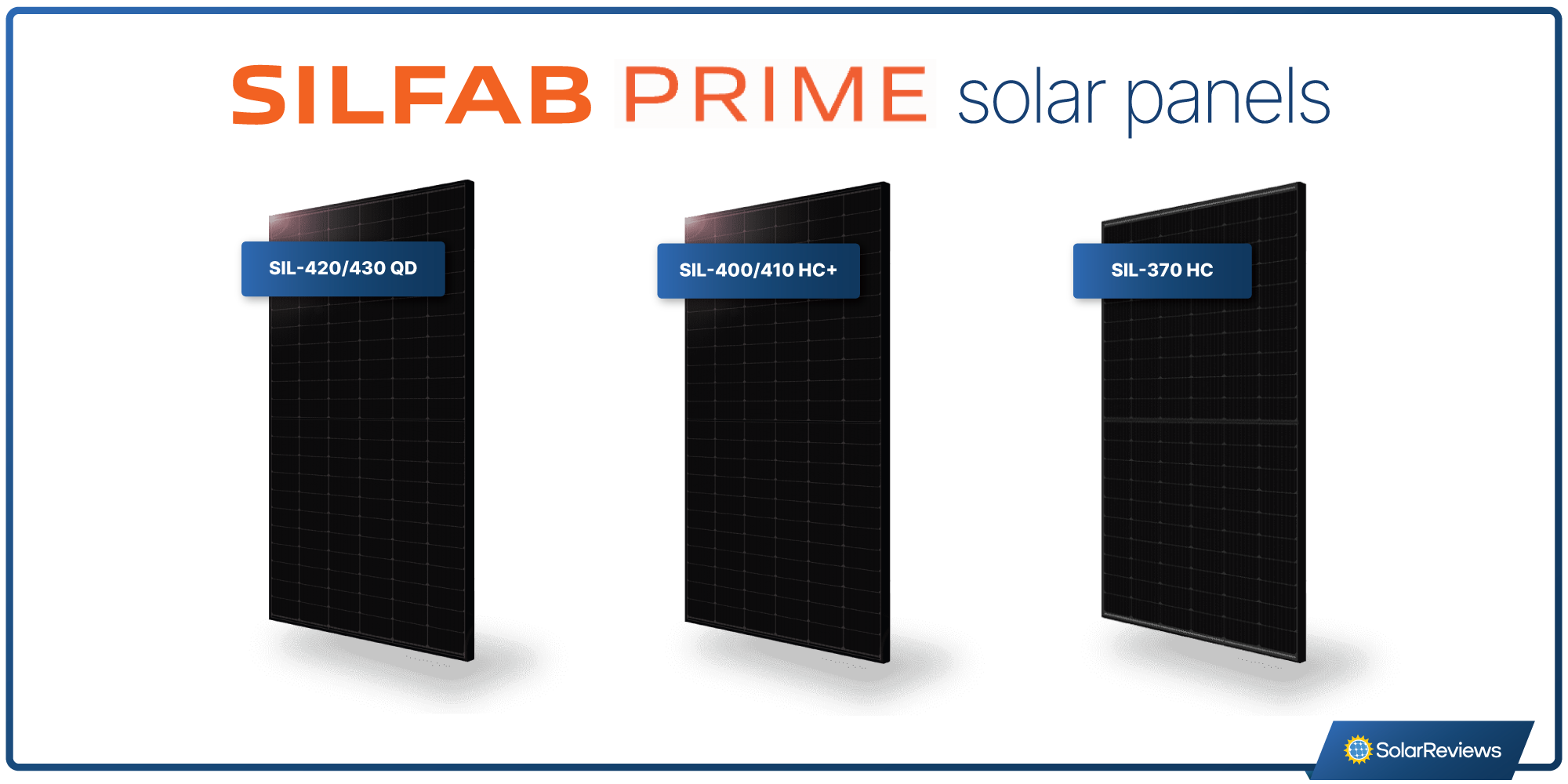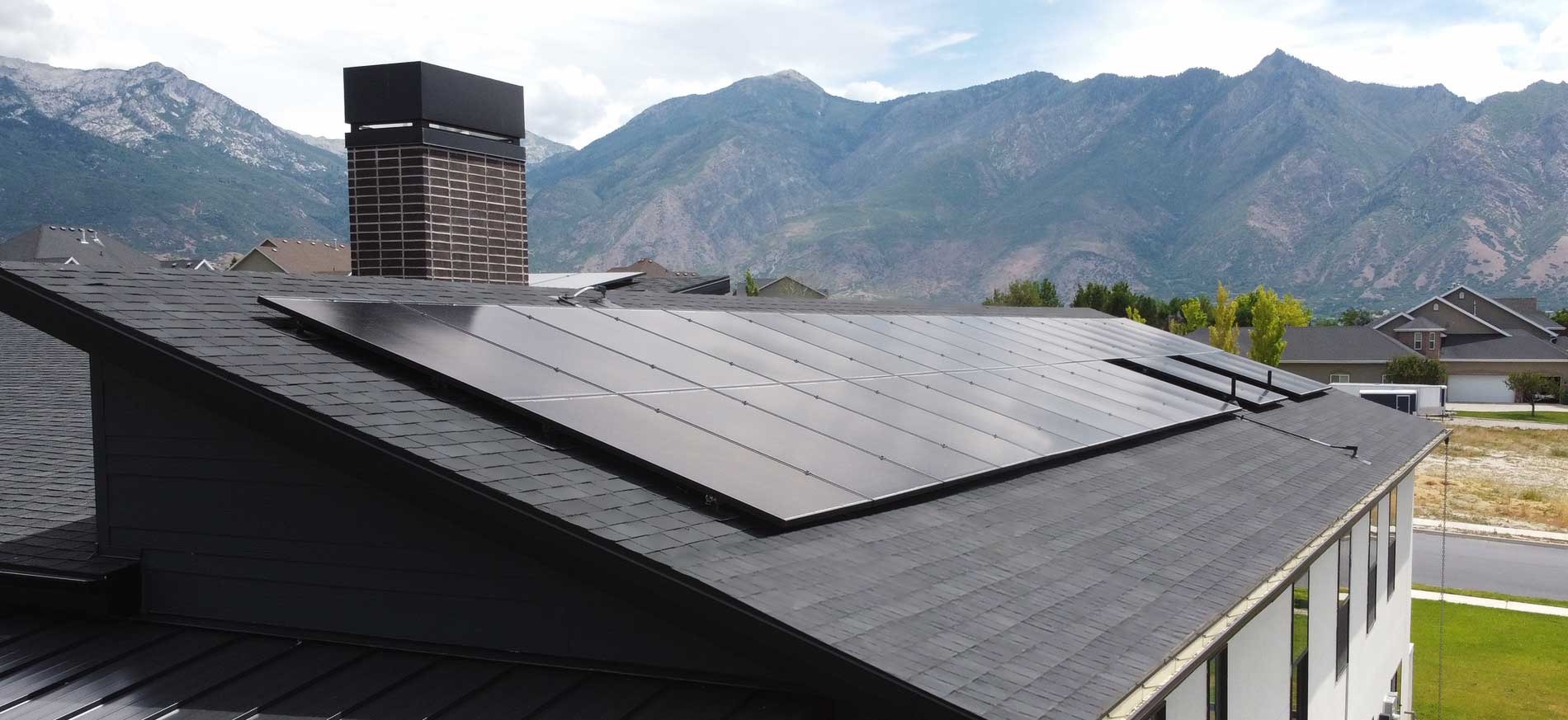Updated 9 months ago
2025 Silfab Solar Panels Expert Review
Written by
Catherine Lane
Over the past decade, Silfab Solar Inc. has established itself as one of the industry's most prominent solar panel manufacturers. Silfab utilizes high-precision automation in its manufacturing process, allowing the company to produce high-quality products quickly.
Silfab Solar is a North American-based company with locations in Ontario, Canada, Washington, and South Carolina. That means any product you purchase from Silfab is guaranteed to be manufactured close to home and specifically for the American market.
Because of its commitment to the U.S. solar industry and high-quality products, our solar experts ranked Silfab #4 on our Best Solar Panel Brands of 2025 list.
Key takeaways
-
Silfab Solar is ranked #4 among the SolarReviews top 10 solar panel brands of 2025.
-
Silfab Solar is a solar panel manufacturing company based in Ontario, Canada, and Bellingham, Washington, with another manufacturing plant in South Carolina under development.
-
Most of Silfab panels’ performance specifications generally fall within industry standards, with premium efficiency ratings.
-
The average installation cost of a typically-sized Silfab Solar system will fall between $18,000 and $20,000, before incentives.
What products does Silfab Solar offer?
Silfab Solar manufactures solar modules for both residential and commercial installations. All of Silfab’s PV modules contain monocrystalline solar cells. The primary residential panels offered by Silfab include:
Silfab Elite
Silfab Prime
Silfab Elite

The Silfab Elite is the company’s highest-efficiency line of solar panels and is manufactured exclusively in the United States. These high-efficiency panels come in two different wattages: 380 W and 410 W.
The panels are constructed with PERC solar cells manufactured to produce more electricity than traditional photovoltaic cells.
Additionally, the Silfab Elite panels use “back contact” solar cells, which reduces the impact of shading and allows more solar energy to be collected by each cell. The combination of PERC and back contact technology improves the Silfab Elite’s overall efficiency.
Silfab Prime

The Silfab Prime series is a premium-quality, half-cell solar panel. Half-cut solar cells are exactly what they sound like – solar cells cut in half with a high-precision laser. The current is lowered by making the cells smaller and reducing resistive losses. In turn, the cells can produce more energy. The smaller cells are also less likely to crack under stress because of their smaller surface area, making the Silfab Prime extra durable.
There are three different models of the Silfab Prime: the Prime HC, Prime HC+, and the Prime NTC. The Prime HC and HC+ use the same half-cut mono-PERC solar cells, but the HC+ has more of them. This makes the HC+ slightly bigger and more powerful than the Prime HC.
The newest iteration of the Silfab Prime uses N-Type TOPCon solar cell technology. TOPCon is becoming increasingly popular among solar manufacturers as it increases a panel's efficiency by reducing certain heat losses.
The Silfab Prime is available between 370 watts and 430 watts.
How do Silfab Solar panels compare to other solar panels on the market?
Specification | Silfab Elite | Silfab Prime HC and HC+ | Silfab Prime NTC |
|---|---|---|---|
Power output (Pmax) | 380 W - 410 W | 370 W - 400 W | 420 - 430 W |
Efficiency rating | 21.9% | 20.7% | 22.1% |
Cell type | Back contact mono-PERC | Half-cell mono-PERC | Half-cell TOPCon (N-Type) |
Temperature coefficient (Pmax) | -0.38%/°C | -0.36%/°C | -0.29%/°C |
Workmanship warranty | 25 years | 25 years | 25 years |
Power warranty | 30 years | 30 years | 30 years |
Power rating
The power rating of a solar panel, sometimes referred to as the power output or power capacity, measures how much electricity it can produce.
All of Silfab’s solar panels align with the industry standard for power rating of monocrystalline modules. Most solar panels used by residential installers today are between 370 W and 415 W, and Silfab’s panels all fall in that range, with the Prime NTC slightly exceeding it.
Efficiency rating
Silfab solar panels have great efficiency ratings comparable to similar solar panel brands. Most panels today land somewhere between 19% and 21% efficient. The Prime NTC model even broke the 22% mark, closing the gap between Silfab and premium solar brands like Maxeon.
Temperature coefficient
A solar panel’s ability to produce power depends on its temperature. The hotter the panel, the less power the panel can produce.
To understand how temperature changes impact a solar panel, manufacturers include the temperature coefficient, which measures how much a solar PV panel’s output drops for each degree Celsius the panel’s surface gets above 25°C.
Both the Elite and Prime models have standard temperature coefficients. The Prime NTC has the best temperature coefficient of all Silfab’s models at -0.29%/°C.
Workmanship warranty
All of Silfab’s solar panels have the same workmanship product warranty. The workmanship warranty covers repairs, replacements, and refunds for defective materials.
The panels initially come with a 12-year warranty that starts on the delivery date. Still, if the panels are purchased and installed by a registered Silfab installer, the solar warranty will be extended to 25 years.
Most panels on the market have a similar product warranty to Silfab: an initial warranty term of 10 to 15 years and the ability to register your panels for an extended 25-year warranty.
Power warranty
The power warranty also called the performance warranty, gives homeowners an idea of how much power the solar panels will produce over time. As solar panels age, they degrade and can’t generate as much power.
Most solar panels today offer a 25-year performance warranty that guarantees at least 86% of the panel’s initial power output at the end of the term. Silfab’s panels are all covered for 30 years, which is impressive! How fast the panels degrade varies by model:
Series | Year 1 output | Year 25 output | Year 30 output |
|---|---|---|---|
Elite | 98% | 90.8% | 89.3% |
Prime | 97.1% | 85.1% | 82.6% |
Prime NTC | 98% | 90.8% | 89.3% |
Price
Once installation costs are considered, Silfab solar panels will cost between $2.85 and $3.05 per watt. For an average-sized solar system, you’re looking at a total cost of $18,000 and $20,000 before the solar tax credit is considered. That aligns with the average U.S. solar cost of $3.03 per watt.
The new TOPCon model may come at a higher price tag than Silfab’s other models because of the new technology and higher performance
Aesthetic

Image source: Silfab Solar
Let’s face it – historically, solar panels have been big and bulky, which makes many homeowners hesitant to go solar.
The newer cell technologies used in Silfab’s panels don’t just boost their performance; they make the panels look better. The Elite and the Prime series of panels are entirely black, so they look more cohesive on your roof.
Also, they can be installed at a pretty low profile, so they don’t stick out as much as some of the solar panels you might think of.
Are Silfab Solar panels right for your home?
Silfab Solar panels are a great choice if you're looking to switch to solar power. They offer high-quality modules and have years of experience in the industry.
Most of Silfab’s products align with industry standards, but that doesn’t mean they are run-of-the-mill panels. Silfab incorporates newer solar cell technology in their panels so you can ensure that you have top-of-the-line products.
But perhaps Silfab’s biggest standout feature is its roots in North America, with facilities in Ontario, Canada, and Bellingham, Washington. Many of Silfab’s panels are Buy American Act-certified and have long been used in U.S. Military and Federal Aviation Administration properties – further solidifying the company’s legitimacy.
Overall, Silfab Solar panels will make for a great solar power system for your home. You can find solar installers in your area that carry Silfab Solar panels by using our solar panel calculator or by checking out local customer reviews on our website.
Catherine has been researching and reporting on the solar industry for five years and is the Written Content Manager at SolarReviews. She leads a dynamic team in producing informative and engaging content on residential solar to help homeowners make informed decisions about investing in solar panels. Catherine’s expertise has garnered attention from leading industry publications, with her work being featured in Solar Today Magazine and Solar ...
Learn more about Catherine Lane